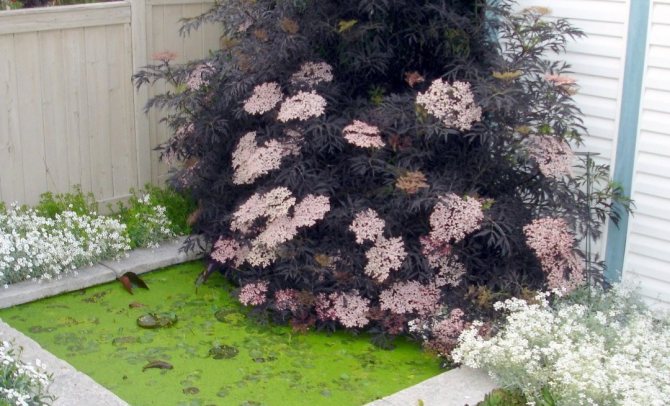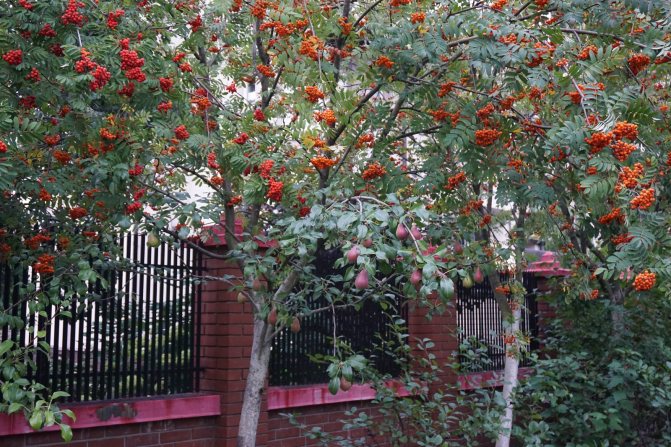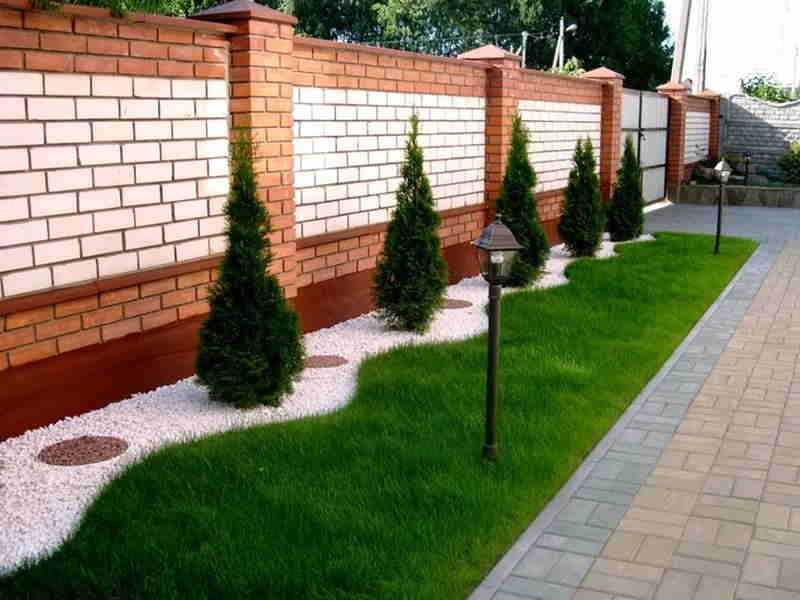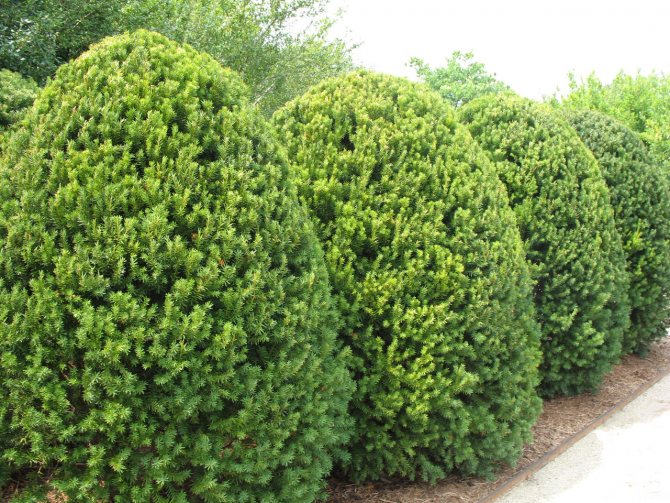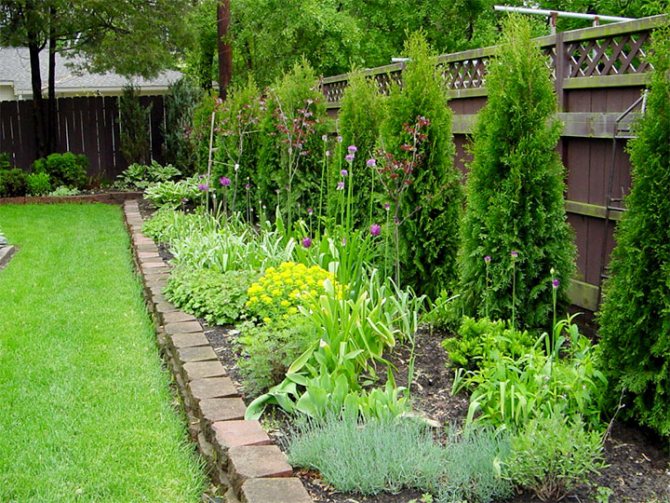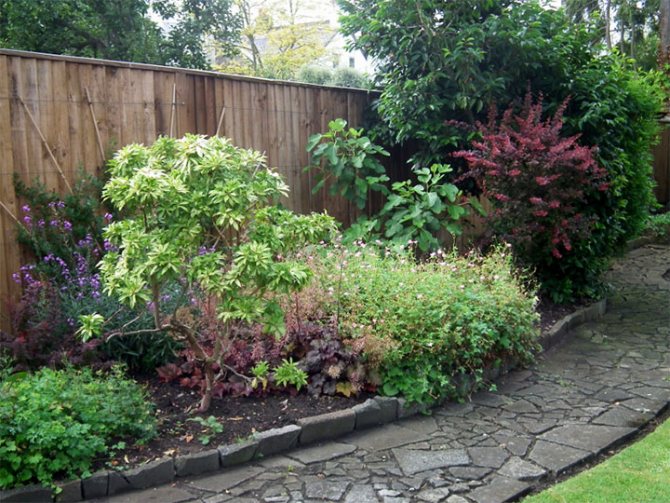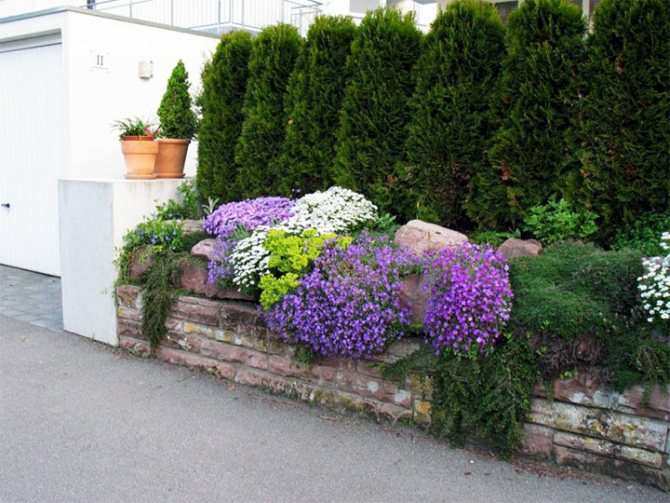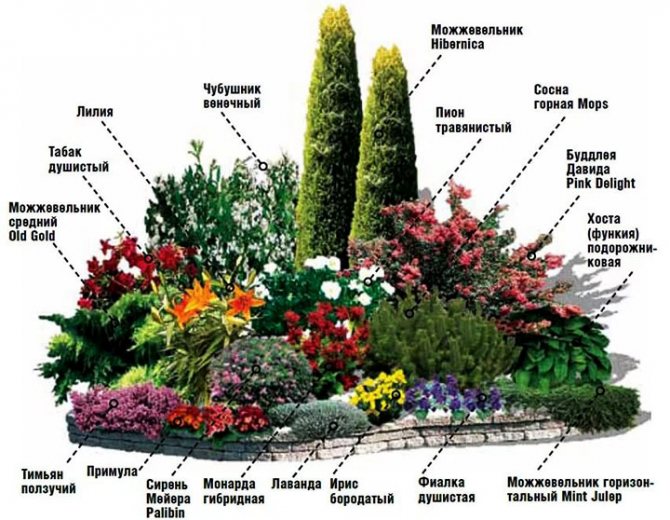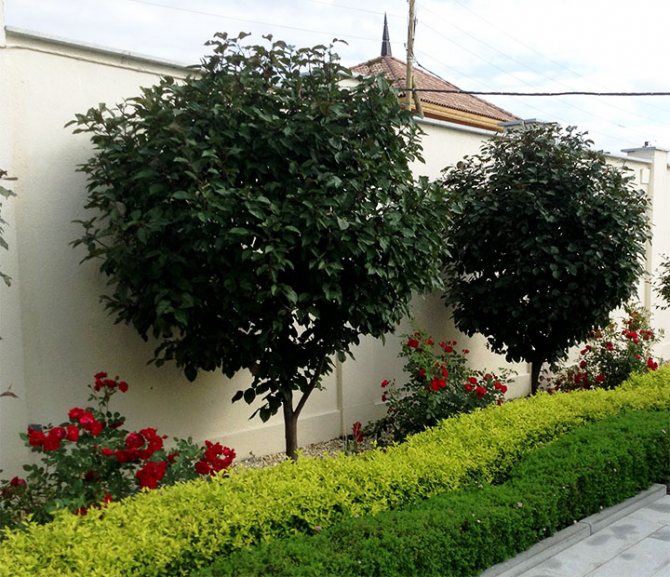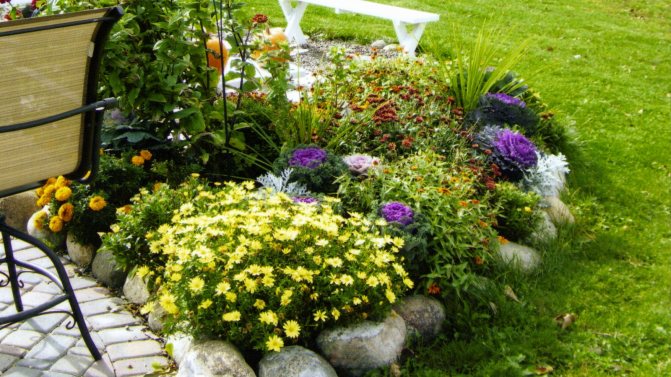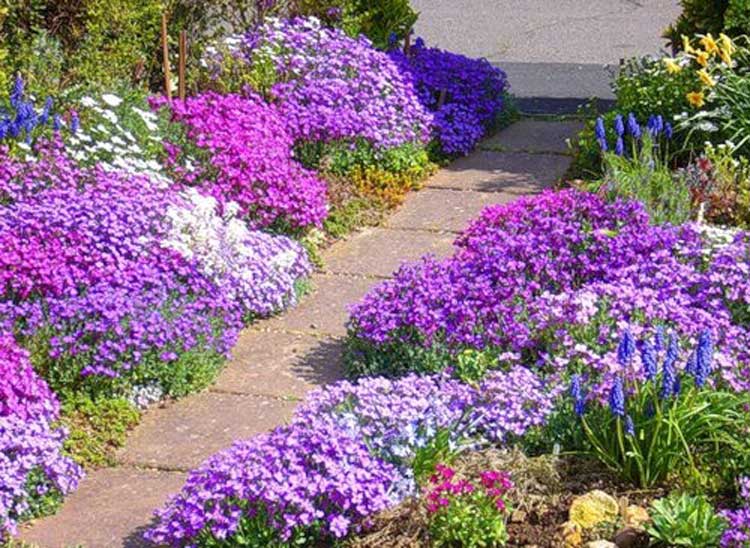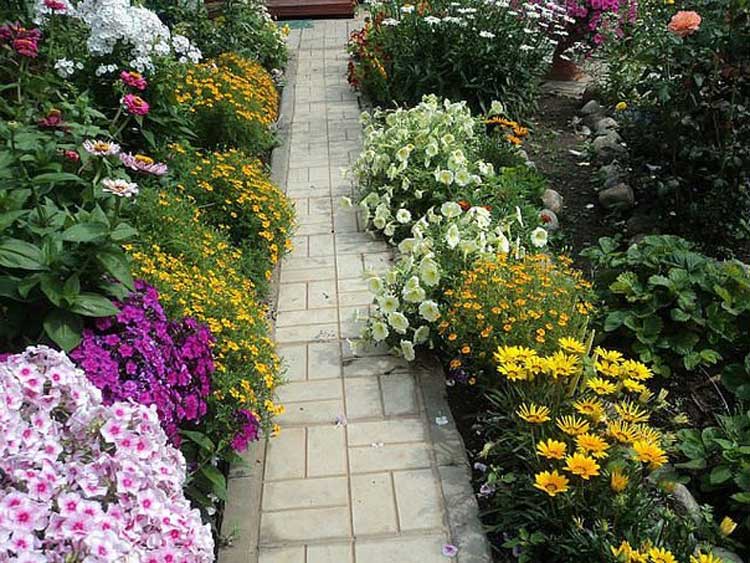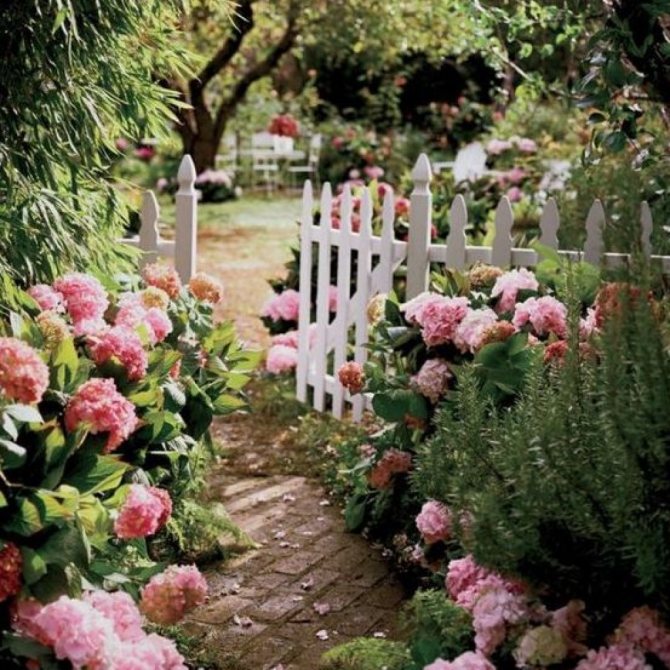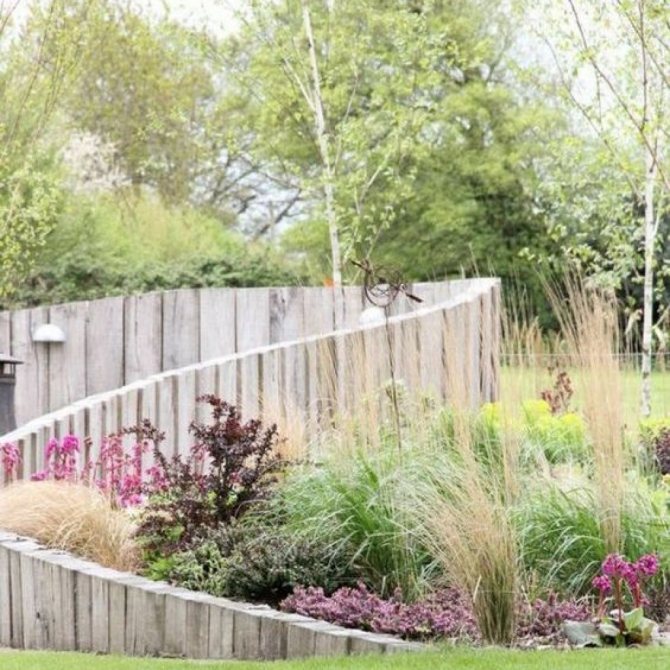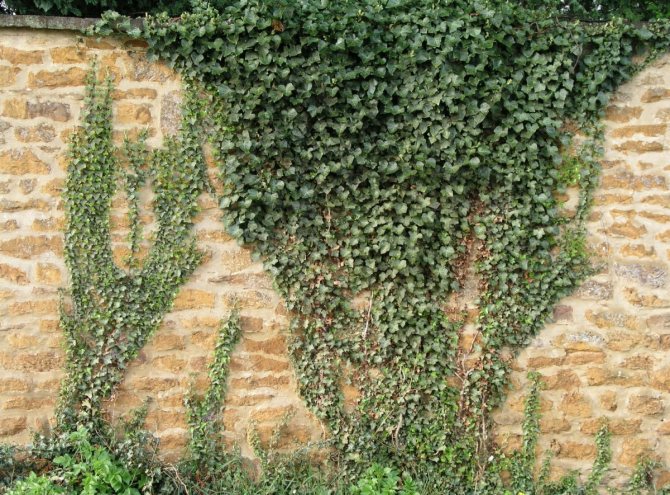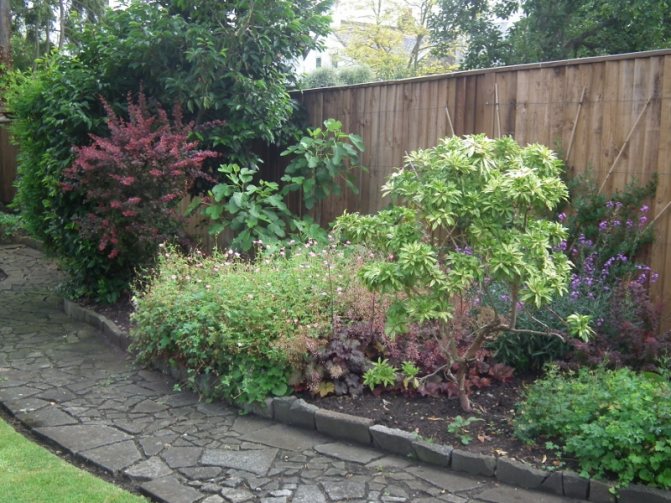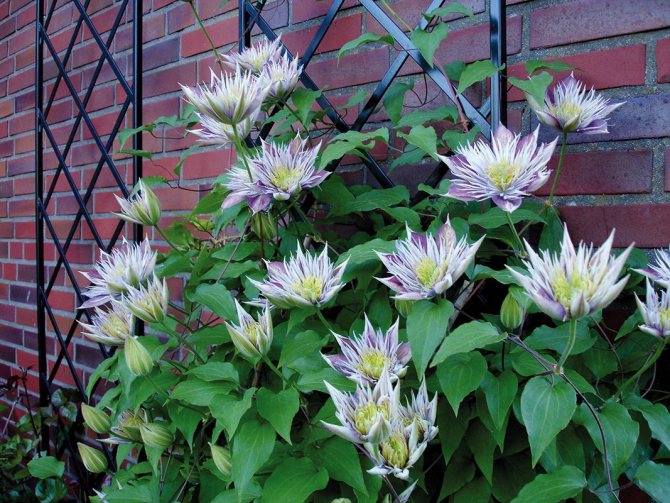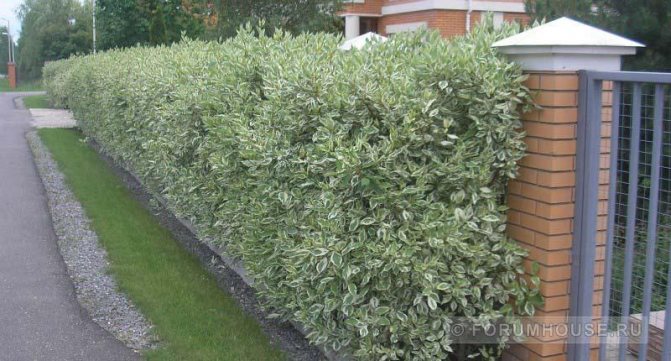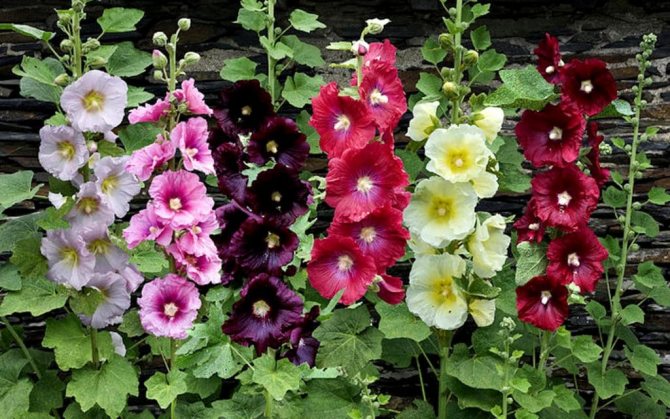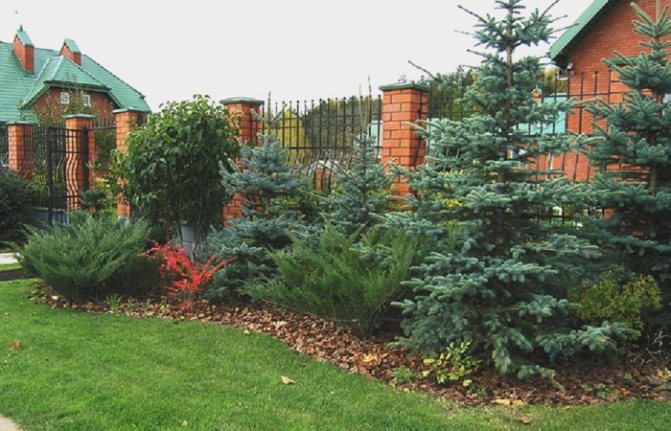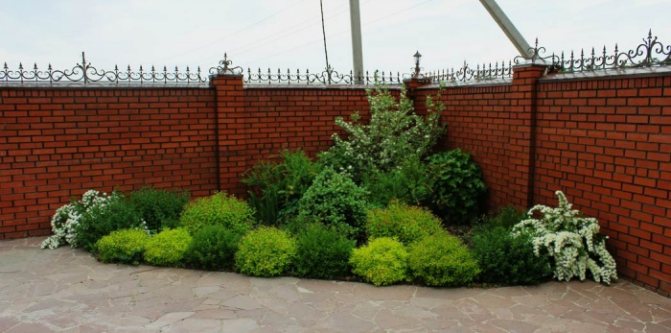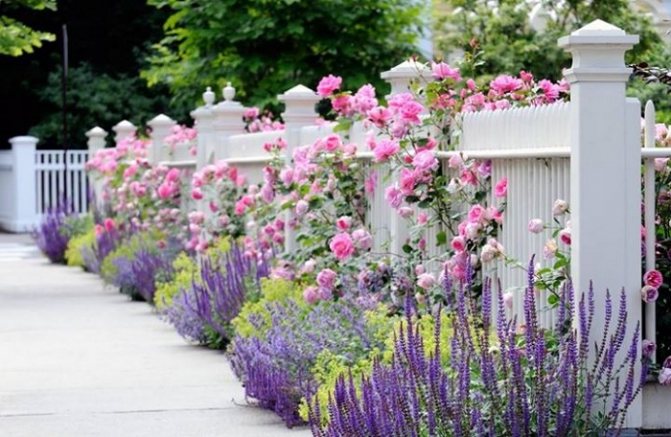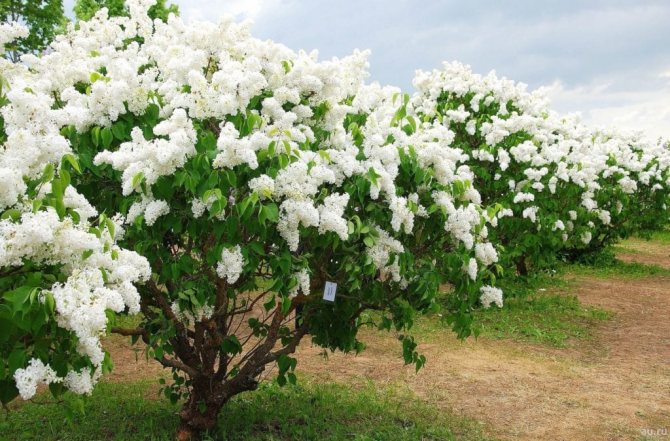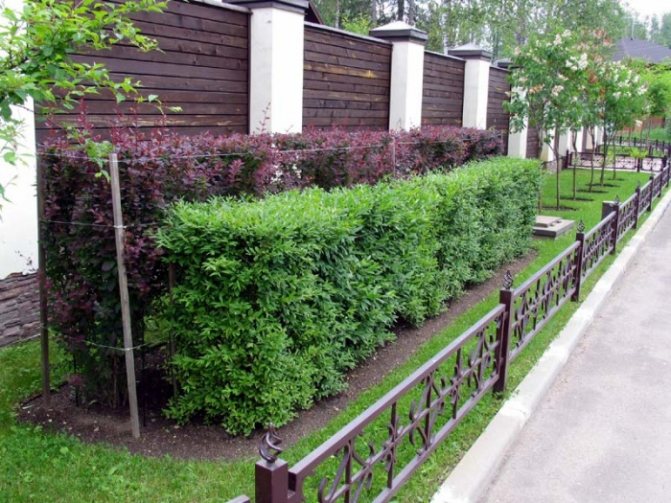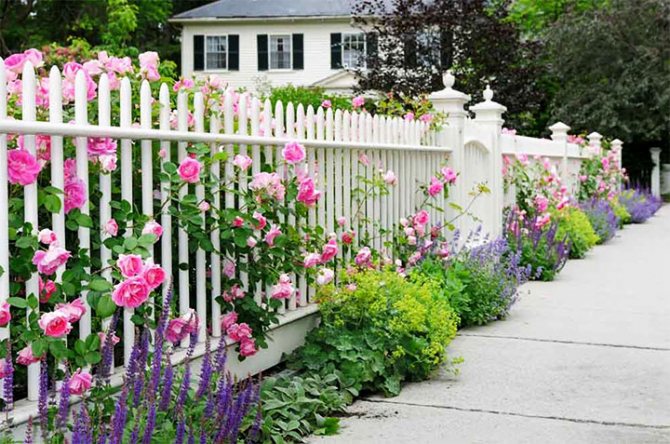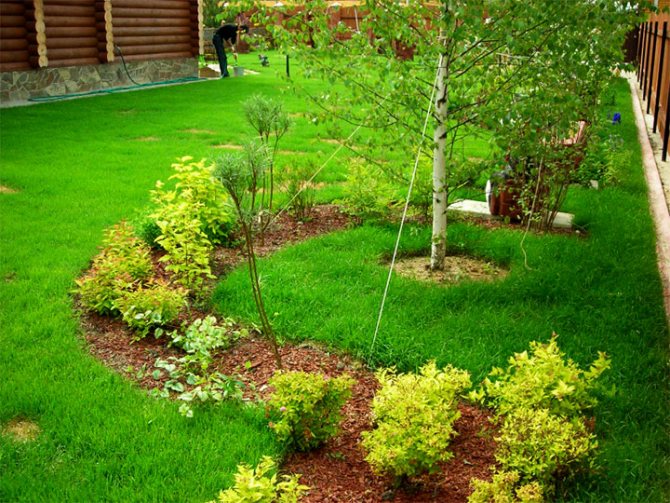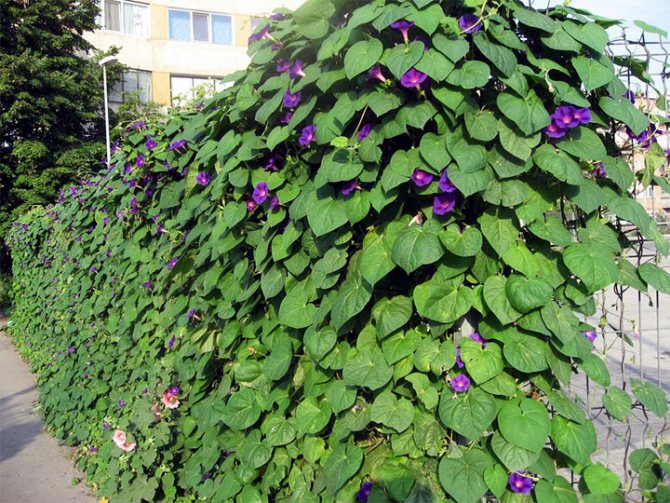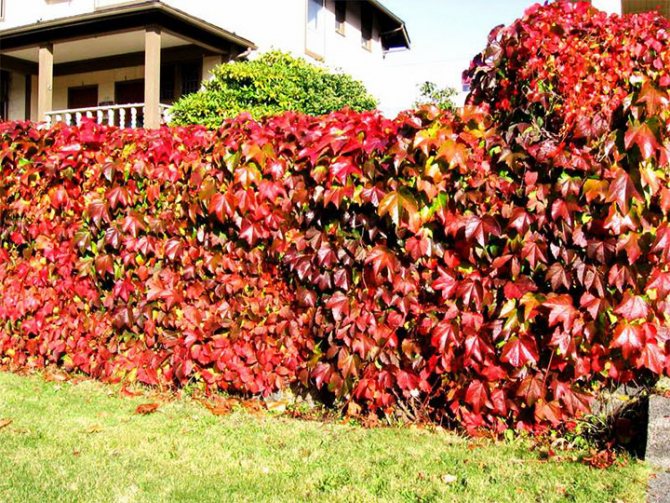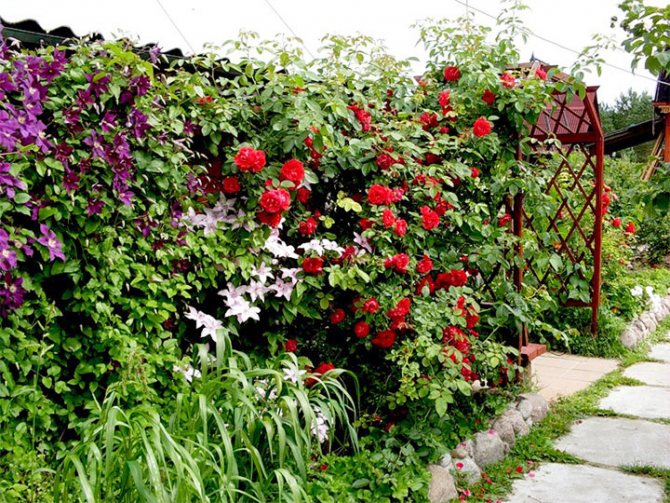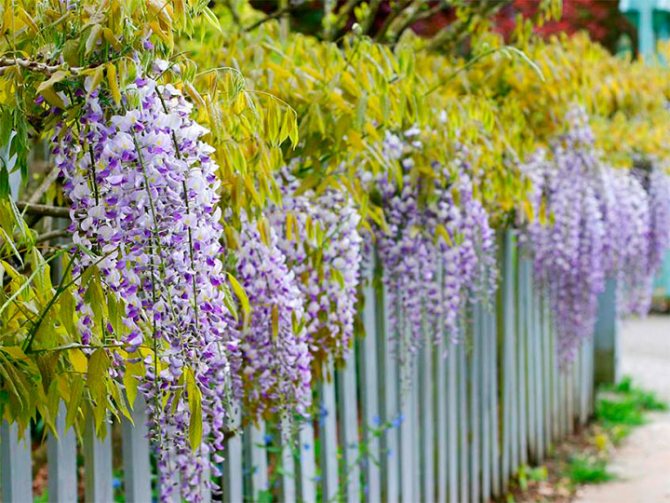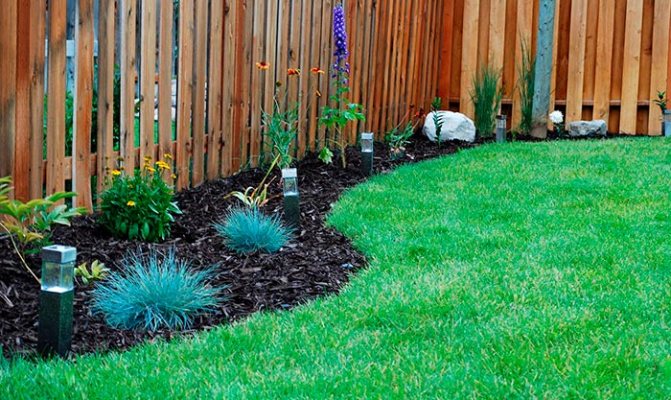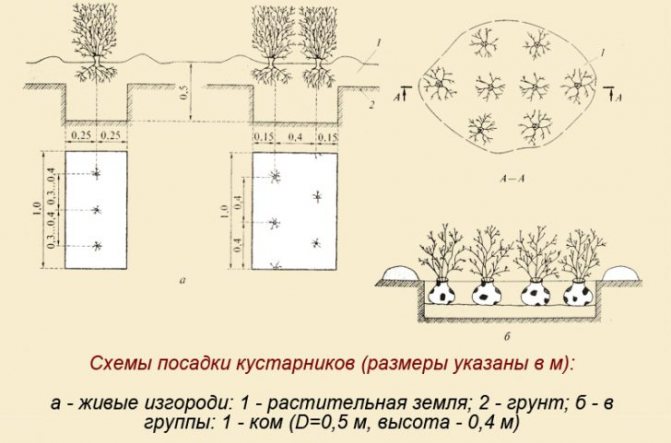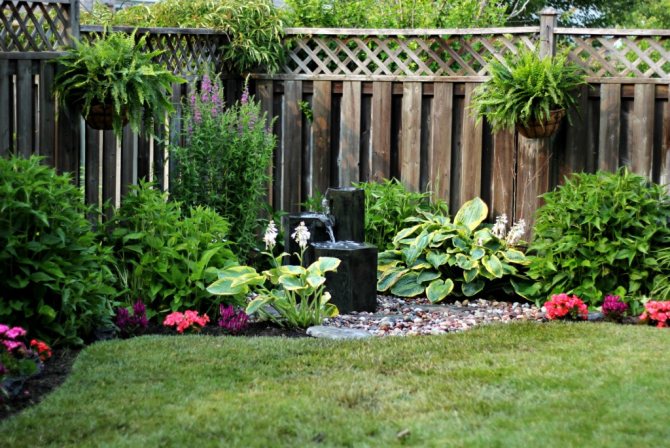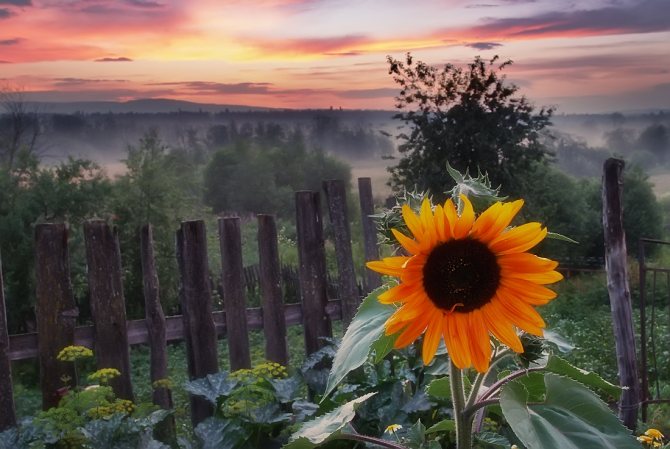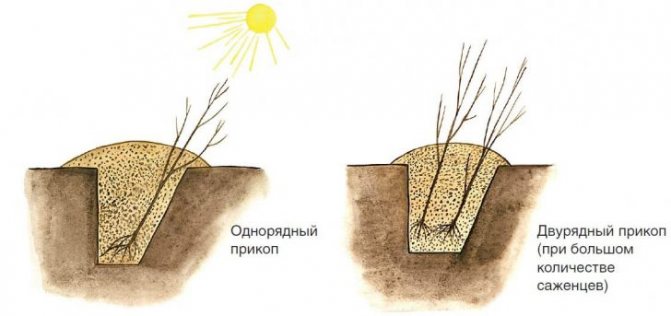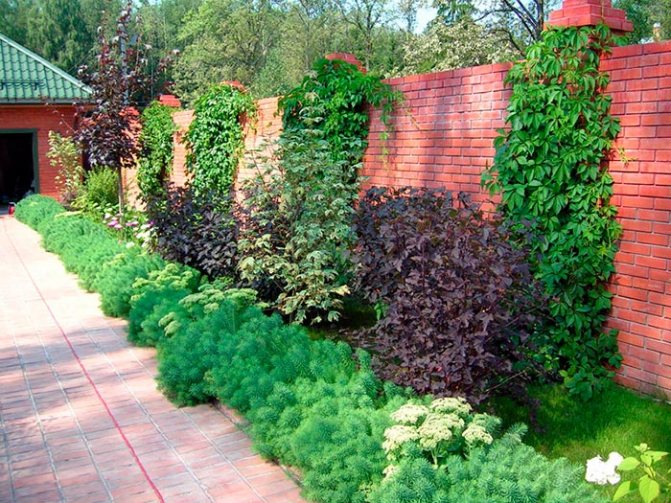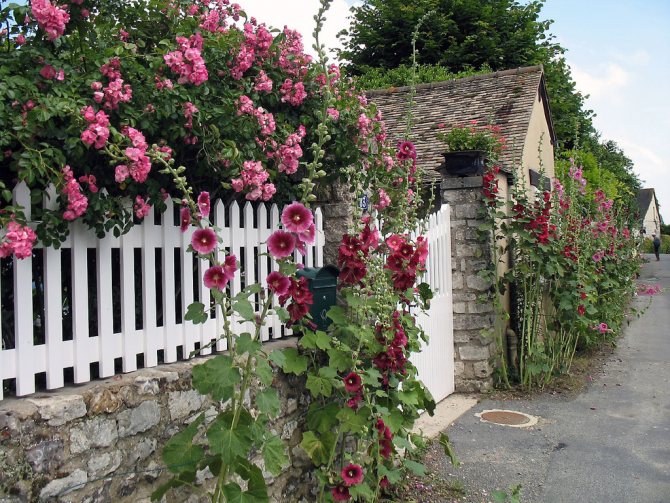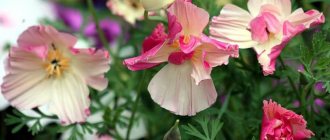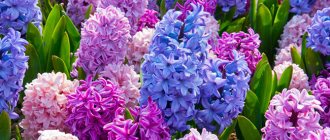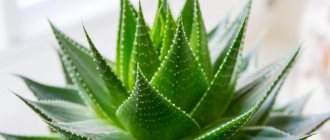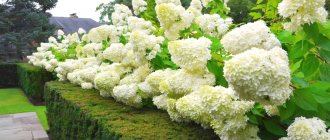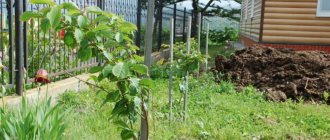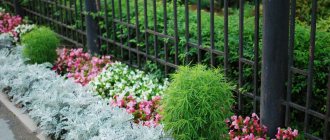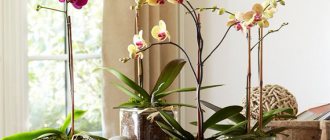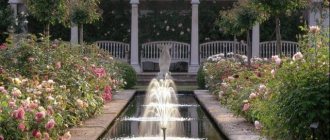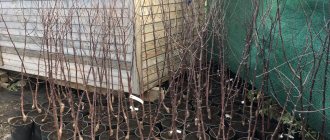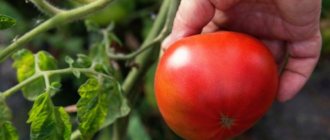Many owners of country houses and garden plots are often dissatisfied with the appearance of their fence around the yard, some want to hide their home from prying eyes, and someone needs to strengthen the slope near their site. It is very important to carefully approach the issue of choosing plants suitable for certain conditions, so that the result of the work is not only pleasant, but also of high quality. Today you will learn about what can be planted along the fence in the country or in a suburban area (photo examples of the best plants are attached).
Things to Consider When Choosing Plants
- What area along the fence do you intend to plant.
- The side is shady or sunny.
- What exactly are plants for here - to protect the site or to decorate it.
- How tall are the trees and bushes you would like to see here.
- Should they require special care, or is it better to do with plants "without whims."
- You should know the peculiarities of the soil in which you are going to relocate new settlers and take into account the local climate.
- And be sure to keep in mind: a small suburban area should not be overloaded with massive plants.
Hedges: what to plant under or instead of a fence
First of all, it is important to determine the priority tasks and conditions (soil, lighting, etc.). In addition, you should decide whether your hedge will be free-growing (this takes up more space) or you plan to form it (this saves space, but requires serious maintenance). Now you can start choosing plants for your hedge. We have selected shrubs suitable for this purpose. You can plant them as soon as construction is over.
If you are planting a hedge along a fence, before picking plants, you need to pay attention to which side the sun is shining from in your case and whether the plants you have chosen will have enough light.
10 most unpretentious and friendly
Derain
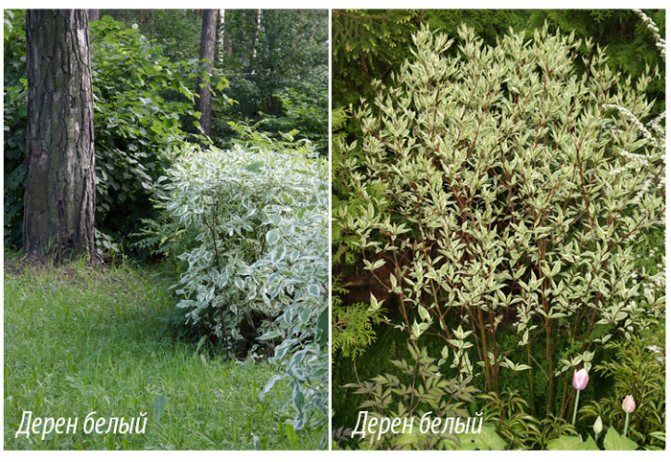
If you want to save money, you can buy one large bush and make several of it. Classic "fence" derens – white, blood red and scion (Cornus alba, C. sanguinea, C. stolonifera). Due to the variety of variegated and bright-bark varieties, the plant looks interesting both as an independent hedge and as a "cover" for a fence.
pros: Unpretentious: most types of deren grow on almost any soil, in the sun and in partial shade. Winter hardiness. Rapid growth rate: any of the common varieties of dern will reach a height of 1 m in the first year. Bright bark that adorns the garden in winter.
Minuses: With short stature, it occupies a fairly large area
Shrub willows (twisted, purple, Caspian)
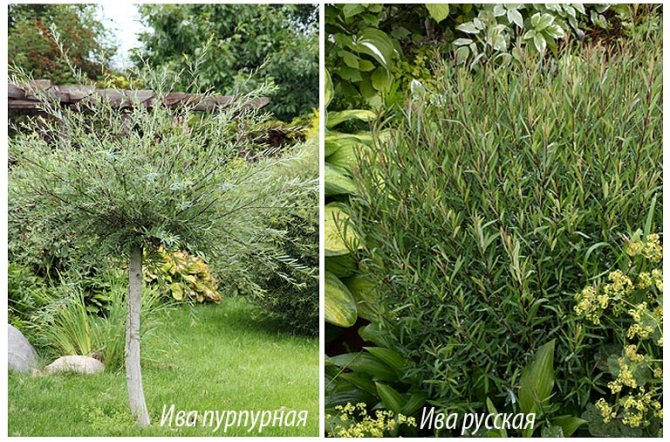

Excellent material for hedges with a height of about 3 meters. There are many varieties and you with a wide range of characteristics, allowing you to choose the option that suits any conditions and needs. Many of them grow very large and are better suited for larger areas. Very interesting thanks to the narrow long leaves fluttering in the wind, basket willow (S. viminalis) and willow schwerina (S. schwerinii). If we turn to the varieties, then among the willows there are excellent candidates for planting in a very small area: willow white (S. alba) 'Sericea', ashy 'Variegata', rosemary (S. rosmarinifolia), whole-leaved (S. integra) ‘Hakura Nishiki’ and ‘Pendula’, purple (S. purpurea) 'Nana'. A moist substrate is most suitable for willows. They are not demanding on the mechanical and chemical composition, but they develop best on acidic (pH 5-6), not particularly saline soils.
pros: They are unpretentious and develop quickly. Easy to propagate: willow cuttings take root well.
Minuses: Demanding on soil moisture and sensitive to soil acidity.
Calyx-leaved bladder
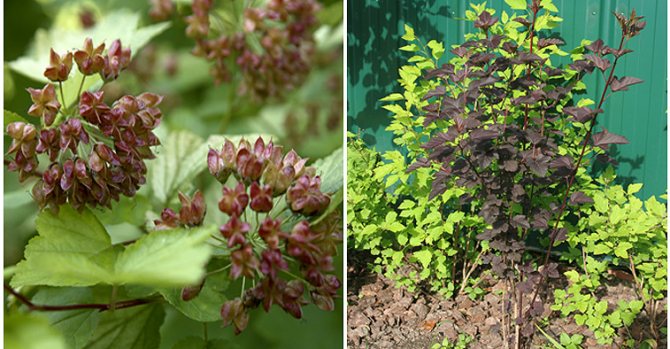

Large (3-4 m - height and diameter) shrub with a dense crown. Shoots grow first vertically upward, then bend in picturesque arcs. Creates a hedge that is completely opaque in summer and quite dense in winter. Bubble feels good on almost any soil: light sandy, heavy clay and stony. He dislikes only alkaline soils, preferring neutral and acidic (pH from 4.5 to 6.5). Put up with a lack of watering. All bladders tolerate shearing very well, which allows them to form bushes with dense compact crowns. pros: Unpretentiousness. High growth rate - 30–40 cm (and up to 1 m) per year in favorable conditions. Practically not susceptible to pests. It successfully adapts to various environmental conditions (including the polluted urban atmosphere). Almost all varieties of bladderworm are frost-resistant.
Minuses: Sensitive to soil acidity (does not like alkaline environment). It tolerates shading, but will not grow in deep shadow. Varieties with colored leaves, even with slight shading, change their color to green.
Cotoneaster brilliant
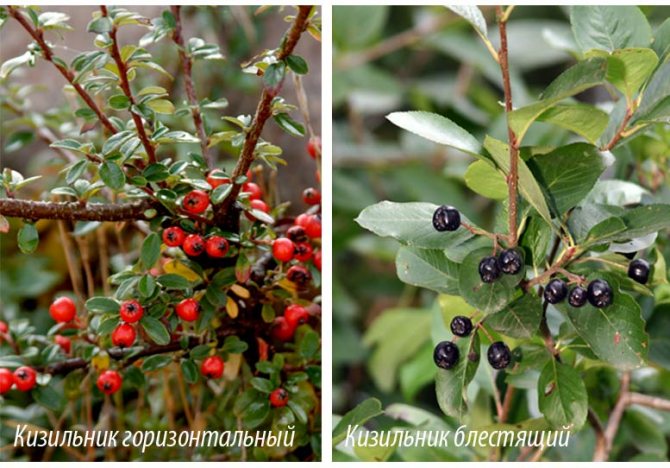

Typically, the cotoneaster is used for low to medium height (up to 2 meters) hedges formed by pruning. When grown in free form, only with sanitary pruning, it grows up to 3 meters in height. It grows quickly under favorable conditions. pros: The cotoneaster has small, densely arranged leaves, it branches well, its dense bushes do not go bald underneath. Unpretentious to the soil, relatively drought-resistant, very shade-tolerant, tolerates even urban conditions well, frost-resistant.
Minuses: Necessity of regular formative pruning.
Black chokeberry
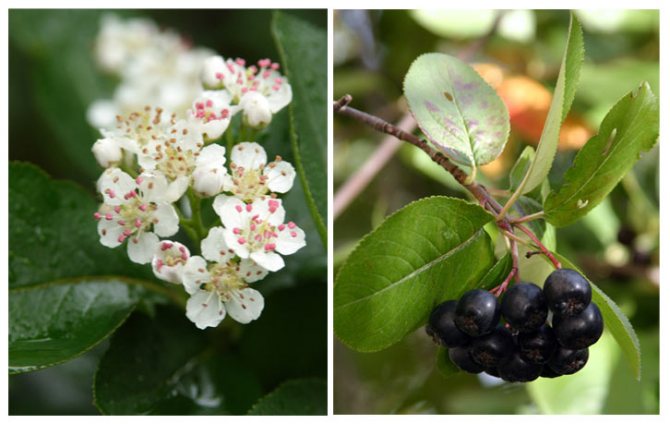

perfect for free-growing hedges - if the plants are mature, dense even in winter. Aronia is very attractive in appearance and retains decorativeness almost all year round. Blooms beautifully. Delicate, white, lush inflorescences by September turn into large clusters of shiny black berries. If left on a bush, dark clusters will stand out effectively against the background of fiery autumn foliage, attracting birds. Chokeberry has many varieties of different heights, and all of them are easily propagated by cuttings, layering, root shoots and seeds. The growth is about 30 cm per year, and even more in favorable conditions. pros: Beautiful bloom. Edible berries (from which tinctures, liqueurs and compotes are made). Unpretentiousness and winter hardiness.
Minuses: Prone to root growth.
Irga
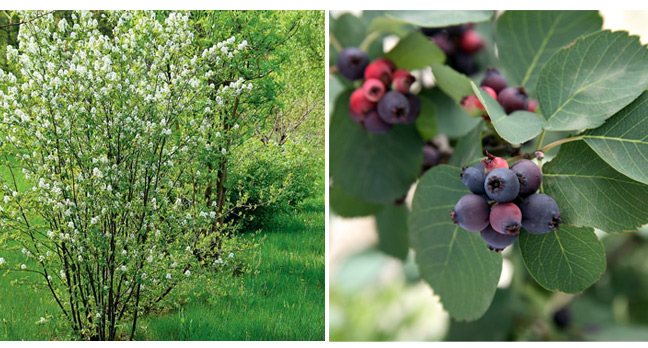

Varietal varieties - e.g. varieties irgi Lamarck, or canadian (A. lamarckii, A. Canadensis) - they bloom luxuriously, give berries of excellent taste and have very attractive foliage. Irgi bushes live up to 60-70 years, and trunks (perennial plants can look like real trees up to 8 m high and have 20-25 trunks) - up to 20 years. You should not plant this shrub near the parking lot: spots from crumbling berries can spoil the appearance of a light car. By the way, if they fall on the light stone path, it will also suffer.
pros: Edible - children like berries very much. Incredibly "tenacious" and unpretentious. Undemanding to soil. Tolerates shading, air pollution, wind and drought. High winter hardiness.Resistance to pests and diseases. Growing rapidly. Begins to bear fruit early. Easily transfers the haircut. Another advantage is durability.
Minuses: Forms abundant root growth. If you plant, for example, irgu spike (A. spicata) will have to fight it constantly. Berries of irgi "patchuchi".
Spirea
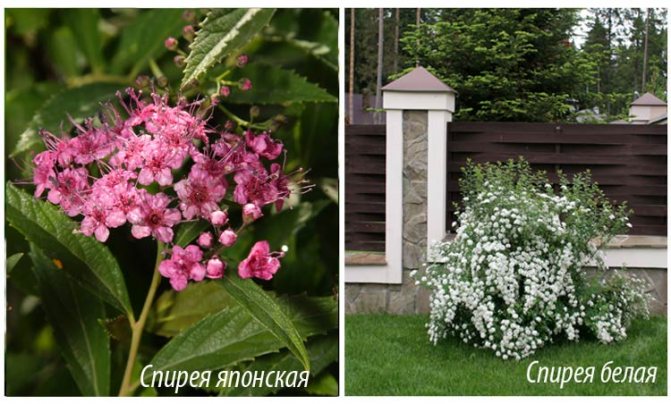

Blooming in the second half of summer spireas are also suitable for creating a wonderful, although not very high (up to 2 meters) free-growing hedge. As a plant for a hedge, tall ones deserve attention spirea willow (Spiraea salicifolia), average (S. media), oak-leaved (S. chamaediyfolia) and Billard (S. billardii). No less attractive Douglas spireas (S. douglasii), felted (S. tomentosa), broadleaf, or white (S. latifolia syn. Alba) will thrive in areas with high groundwater. However, here you can give free rein to imagination, since there are enough varieties and species of different heights, with a varied shape and color of leaves, blooming at different times, and ready to grow in a fairly wide range of conditions, the spirea has enough. With regular haircuts, the spirea becomes thicker and blooms better. In addition, it can be rejuvenated by stump pruning.
pros: Spireas are very beautiful, unpretentious and frost-resistant, grow quickly and live a long time, retaining decorativeness for decades. They easily tolerate different soil compositions and require little maintenance. Most of them do not need to be watered often, but among the many varieties you can pick up moisture-loving ones that can grow even in waterlogged areas (for example, felt spirea).
Minuses: Rarely more than 2 m in height.
Lilac
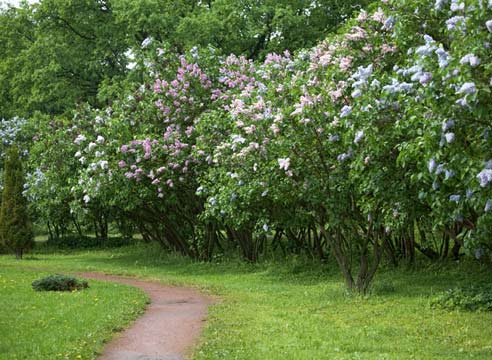

An unusually beautiful and extremely diverse flowering shrub. Varieties that grow well in temperate climates, lilac much more than other ornamental shrubs. The types of lilacs are not so numerous, but the types of lilacs are very diverse. Numerous varieties of common lilac prefer sunlit areas with fertile soil and low groundwater levels. Amur lilac - one of the most frost-resistant and drought-resistant lilacs. It tolerates urban conditions well. It blooms later than common lilac, at the end of June-July, flowering lasts about two weeks, the flowers have a strong smell. Amur lilac lives up to 90-100 years. The same frost resistance and drought resistance is distinguished by light-loving Hungarian lilac, not picky about the soil. In favorable conditions, the annual growth of Hungarian lilac is 40 cm in height and 40 cm in width, and at the same time it grows up to 4 meters in height. It usually blooms in June, flowering lasts 20-25 days.
pros: The main plus is the extraordinary decorative effect. You can pick up unpretentious species and varieties that are not very sensitive to soil and watering regime.
Minuses: Lilac is light-requiring. Forms root growth actively. With age, if the shoots are not removed, the bush takes on an untidy appearance and grows in width. If removed, the lower part of the bush becomes transparent.
Golden currant
Very decorative, reaching 2-2.5 m in height. Smells good during flowering. pros: Edible. Possesses fantastic adaptability, resistant to heat, dust, smoke, drought, frost, pests and diseases.
Minuses: Berries of decorative currant ripen unevenly. Rarely grows above 2 m.
Tatar maple; ginnala maple, or riverine
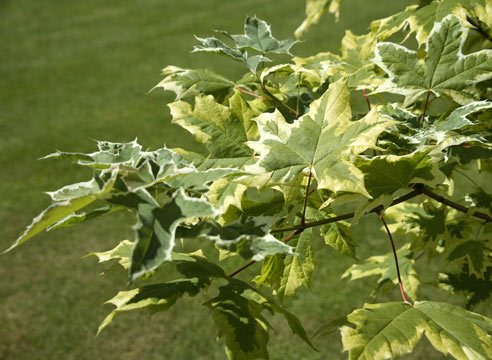

Maple Tatar and Ginnala maple are similar to each other both in appearance and in requirements for conditions. Both species grow as small trees or large shrubs with an average height of 4 to 9 meters. Suitable for trimmed hedges. They give abundant root growth. If it is undesirable for the maples to "run away", it is necessary to provide for a restriction on the sides of the planting trench, for example, laying a wide curb tape. pros: Tolerate haircut well and grow quickly.
Minuses: Tendency to form root growth. Photophilous. In partial shade, they lose their bright color. In both species, the trunks become bare rather quickly. If this is undesirable, it is necessary immediately, without waiting for the crowns to close, to form a trapezoidal profile of the fence.In this case, the lower branches should be longer than the upper ones in order to receive more light. In this case, the bottom will not be exposed.
Well, and finally, the most practical option for using the usable area is mixed free growing hedge... For example, you can plant different lilac and chubushnikie.g. high crown mock-orange (Philadelphus coronarius) or numerous varieties common mock-orange (Philadelphus pallidus), shading them with shorter rose hips in the foreground. They will bloom at different times, and the hedge will retain its beauty for most of the season.
Minuses of this option: Difficulties in the selection of plants so that they are harmoniously combined with each other and at the same time they are suitable for the same conditions.
Fashion mixborders
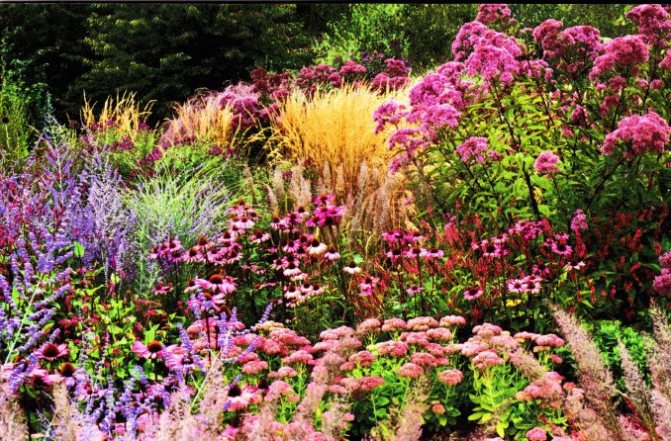

This is when flowers and shrubs are combined. In this case, you can plant thuja, juniper and other types of conifers. Dwarf trees and bushes will also be appropriate. And necessarily - a riot of flowers, which are selected so that their bloom falls at different times. These will be wonderful bright spots that attract attention.
But with such landscaping, you need to take into account the condition of the fence, which also will not go unnoticed. So before you start planting, you should tidy up the fence.
Flowers along the fence will be good both in the form of complex compositions and in the form of unpretentious flower beds with unpretentious plantings.
And you can bet on tall flowers. For example, plant dahlias in front of the fence. These bright large flowers will always distract passers-by from the desire to look into the yard.
Landing rules
Planting along the fence should not be disorderly. First of all, you need to solve the following issues:
- what area is supposed to be planted, since small areas should not be overloaded with large plants and plantings should not be frequent;
- where the plants will be located, on the sunny or shady side of the fence;
- how the plantations will serve as protection of the personal plot or decoration;
- desired plant height;
- it is necessary to take into account the peculiarities of the soil, climatic conditions, and also whether the fence does not shade the plants;
- is it possible to plant plants that require careful care, or use unpretentious crops;
- what kind of fence (solid, rare, mesh-netting), what material it is made of, its dimensions, integrity and appearance.
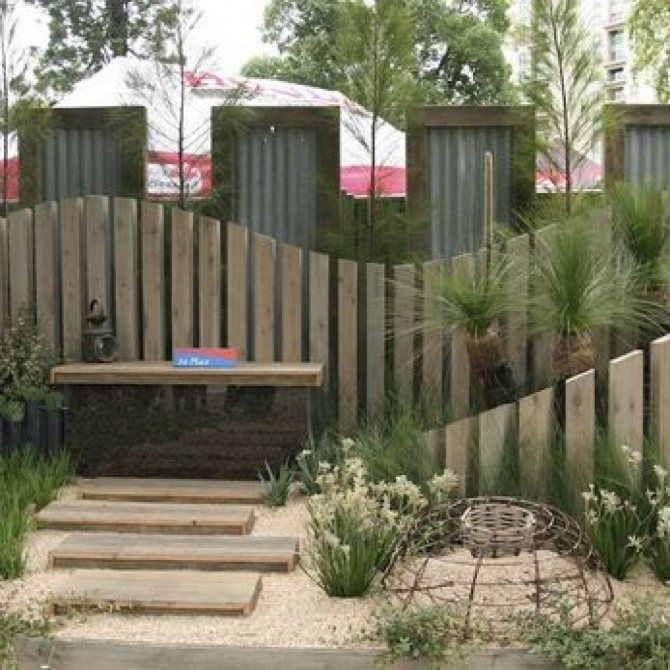

Having solved all the questions, you can proceed to the selection of the plants themselves. It happens that the crops selected for planting cannot grow in a certain area. It is advisable to plant trees at least 3-5 meters from the fence, shrubs at a distance of 1-1.5 meters, in order to avoid damage to the fence by roots. Fences are different and for each you need to choose suitable shrubs, trees or other vegetation.
Currently, the use of mixborders is very popular - mixed plantings of shrubs, flowers and trees. The basis of such plantings is the use of plants flowering at different times, while well in harmony with each other. Such plantings are characterized by the use of several types of conifers, dwarf shrubs and trees, a wide variety of flowers.
Shrubs
Still, most gardeners tend to decorate fences with more "solid" plants. For example, bushes can be used to disguise a nondescript hedge, to reliably fenced off from neighbors. They are easy to take care of. As a rule, they do not braid the fence and do not spontaneously grow over the site.
What are the best bushes to plant along the fence? Derain is among the most popular. It has an unusually interesting color with a silvery bloom, and if you place low conifers nearby, the composition will turn out to be very interesting.
Derain is easy to cut and shape. It is perfectly formed, quickly forms a reliable protection against dust.
If you plant a seedling in the spring, then by the beginning of autumn it will be a meter high.Many are attracted by such a newcomer, but it must be borne in mind that the derain needs a decent living space. Therefore, if you want to see more different shrubs along the fence, you need to take a closer look at other species.
A good idea is to plant a Thunberg barberry along the fence. These bushes of a beautiful spherical shape reach a height of 90 cm. Matte leaves with the onset of autumn acquire a red-yellow tint. The fence at this time looks very impressive.
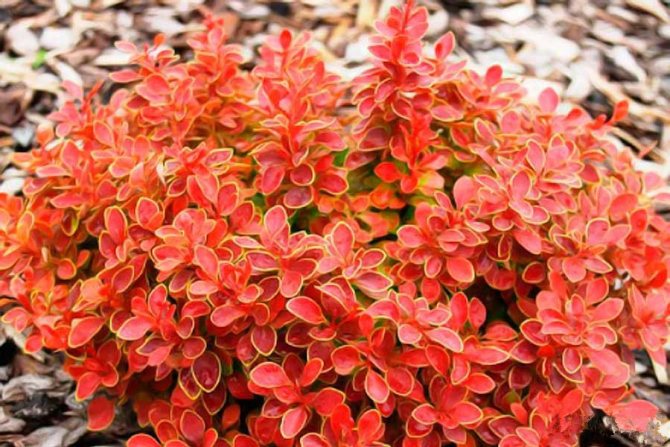

When planting, it should be borne in mind that the barberry does not like shaded places, does not react well to the cold north wind, therefore it is better to place it on the west or south side of the fence. But gardeners will not have problems with watering: rainwater is enough for barberry.
Derain and barberry do not tolerate being close to each other well, since they have different requirements for the composition of the soil and the amount of moisture. Any of these shrubs will not show their best decorative qualities.
And what is bad about spirea, which is otherwise called the viburnum vesicle? It also grows rapidly, literally a few months after planting, the bushes covered with lush foliage form a full-fledged hedge.
But for the completeness of the picture, the spirea certainly needs to be cut so that it is not shapeless.
Take a closer look at such famous shrubs as lilac, hawthorn, elderberry, chokeberry. All these are fast-growing plants that can hide a fence in a short time. You can plant them in groups, with lower trimmed bushes in front of them. Very original options can be obtained.
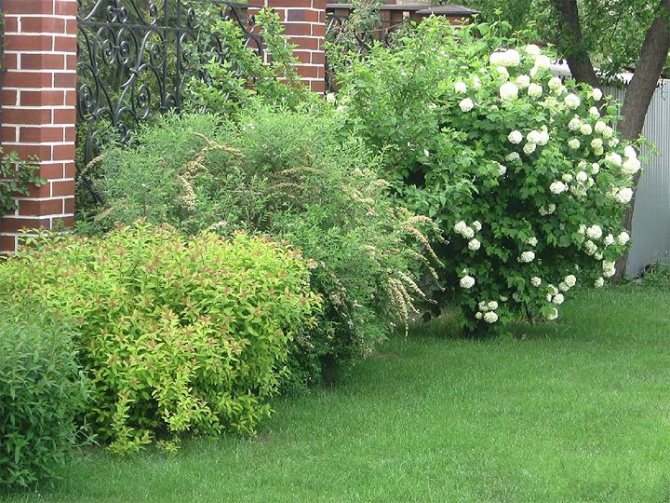

Well, if the owners want to combine business with pleasure, they can plant berry bushes along the fence. Here you have a fence, and the annual harvest of raspberries, currants, gooseberries, rose hips.
Very important! Shrubs should not be placed close to the fence. When planting, dig holes at a distance of 1-2 meters.
Perennial plants
Landscaping specialists often recommend planting perennial vines near hedges for landscaping. Such decorative plants, unpretentious in care, are able to hide a private territory with a hedge. Clematis grows well on wet soils. The plant will delight with flowers of red, blue, white shades. The next year, the vine will grow on its own if you protect it in winter.
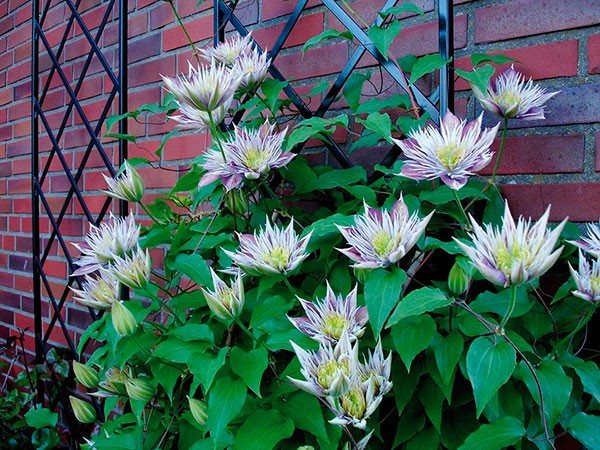

Clematis
A good liana for shade in landscape design for compatibility with others is ivy. The plant can cling to both the hedge and the walls of the house for landscaping. It grows well even in the shade.
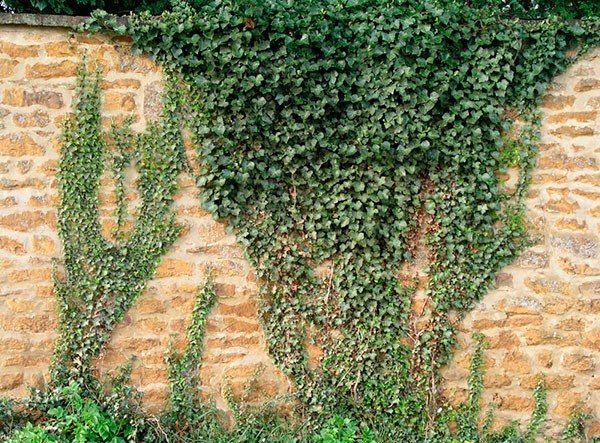

Ivy
Trees
The usual picture: on most summer cottages, fruit trees grow along the fences, performing a double function: they both serve as a fence and regularly bear fruit. Recently, however, summer residents have been thinking not only about benefits, but also about beauty, striving to surround their possessions with decorative trees. Splendid maples, chestnuts, modest willows, birches, lindens are planted.
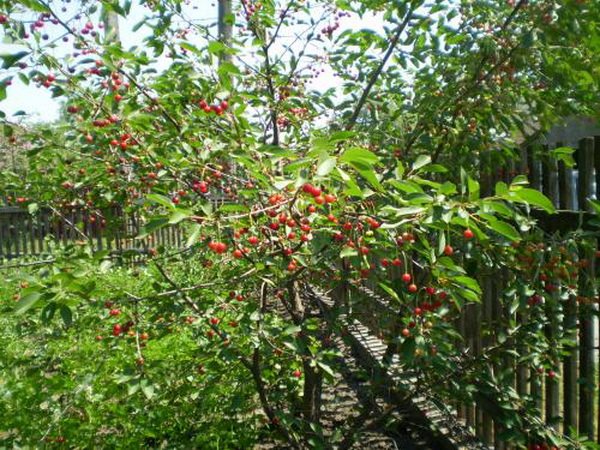

But the favorites of gardeners, probably, can be called conifers, especially ate. However, by doing so, summer residents are restoring the old tradition - to decorate the farmsteads with conifers.
This should not be done spontaneously. In order for a composition of young Christmas trees to be truly beautiful, you need to plant them at a distance of about 30 cm and monitor their development, constantly cutting in width and height.
Wondering which plants to choose for your hedge?
What are decorative fences - original and different, you can learn from our article.
Practical application of fences
The fence on the site can play the role of protection from outsiders, be a decoration of the site, or simply mark the boundaries of the territory. It all depends on where the house is - on a busy street or next to a highway. It is necessary to consider the type of building, relations with neighbors and much more.
What else can a fence serve:
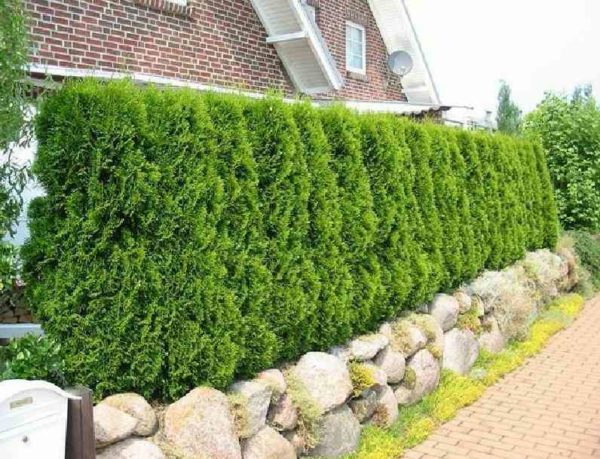

Of course, the fence, depending on the functions performed, can be made of various materials.
How to plant trees
The first line is to plant low conifers. This can be, for example, blue spruce. Tall trees will remain in the background.
Deciduous trees with a creeping crown (birch, willow) should be planted in the background, and pointwise.
Trees and many shrubs, as a rule, have a developed root system, so there must be a distance of at least 3-5 meters between the seedlings and the fence, otherwise, over time, the roots will destroy the main fence.
This is also important because the fence will shade young plants, which will affect their growth.
It must also be remembered that in the process of development, the roots of trees grow, cling to each other. That is why it is best to plant trees in a pre-dug trench in one row. This method will give a good result: the trees along the fence will form an even dense line.
Photos of plantings on the site and outside
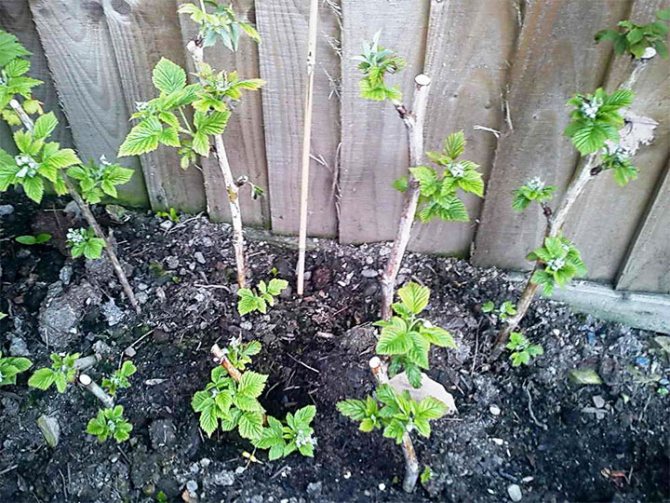

Raspberry bushes after fencing
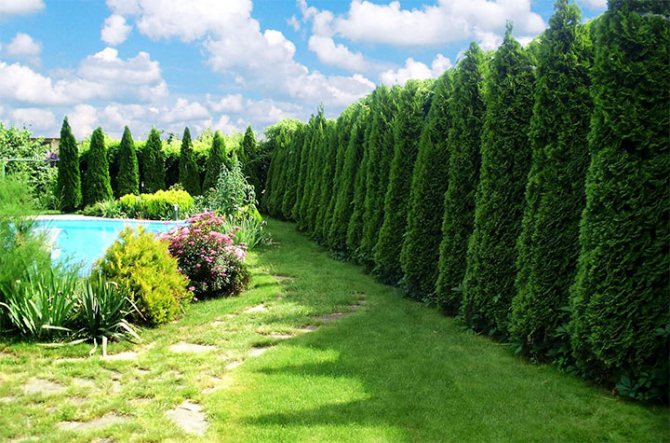

Live fencing of the site with conifers
Greening the borders of the backyard territory is a natural set of living colors of landscape design, which will make the site well-groomed, cozy and protected from prying eyes.
The decorative appearance of the territory creates an atmosphere around a private house.
What to plant along the fence in the country? This question is often asked by inexperienced summer residents. Let's talk about unpretentious plants and trees that are popular.
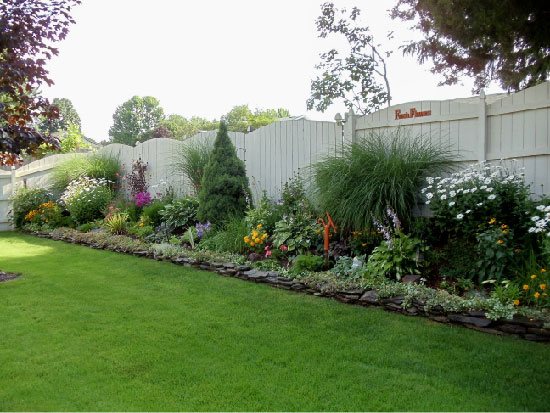

Trees
Before planting a tree along a fence in the shade or in the sun, there are 2 subtleties to consider.
Calculate the percentage of shaded area that forms around the tree and fence. Please note that only plants and trees that can tolerate shade can be planted here.
Free up a space for planting trees at a distance of 3 m from the fence so that they grow normally. So you will not risk a fence that can be damaged by the root system of the plant or the crown of the tree.
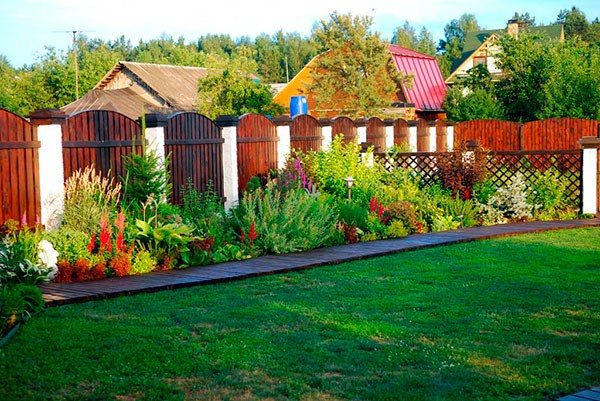

In order for the trees to grow for good, often apple trees, cherries, and peaches are planted in the country near the fence. Also, the favorite tree species are mountain ash and birch, which create a favorable environment. Chestnut trees are planted less often near the fence, as the plant grows with a large root system. As for birch and mountain ash trees, unlike chestnuts, they are unpretentious in compatibility with other trees.
To decorate and design a private plot, to protect from prying eyes, conifers, linden trees, willows are planted.
Shrubs
Bushes near a private fence made of corrugated board or netting mesh also look beautiful. They are unpretentious in care, they are able to close the territory near a private house from prying eyes.
If the site is sunny, then you can plant lilacs on it. In spring and summer, it will bloom, in autumn and winter, it is better to cover lilac bushes. Amur lilac is a hardy bush variety.
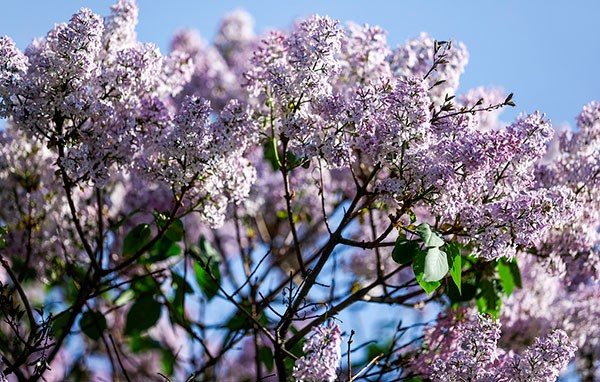

Lilac
Barberry will make the site unusual, and you can pick red berries from it in summer and autumn. This plant loves both sun and shade. The main thing in caring for barberry is watering, especially during the fruiting period. This is a medium-sized bush with long branches, it requires a planting 2 m from a private fence.
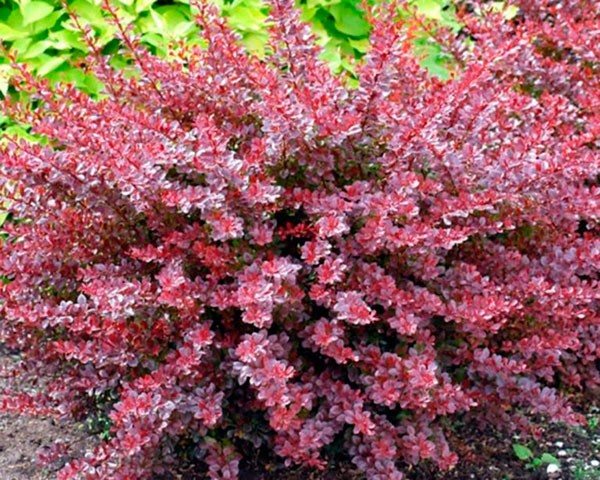

Barberry
Hydrangea bushes will decorate a private chain-link fence. Hydrangea blooms in red and other flowers, tolerates any neighborhood. Bushes can, after planting in a flower garden near the fence, grow high by the fall, are able to close the site from prying eyes.
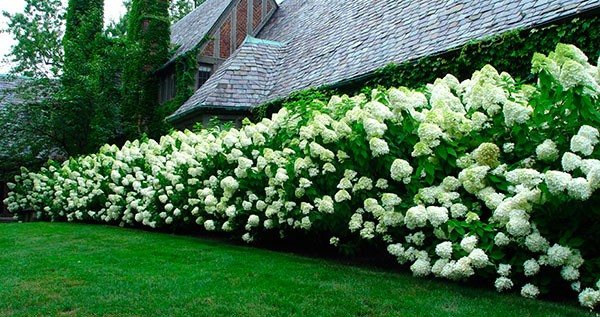

Hydrangea
How to choose plants for the fence
The main fences, near which the plants are to be planted, are of different types. And for each you need to choose the right trees, shrubs or other plantings.
Rabitz
One of the most popular types of country hedges. Not the worst option, but its transparency sometimes does not suit the owners of the plots. They want, for example, to isolate themselves from curious neighbors.
The chain-link has a design that is convenient for climbing plants. There is, however, a drawback: you will have to be especially careful so that the mesh does not deform under the solid weight of the vines, does not rust.
Hops form a green barrier very quickly. But it is painfully tenacious: very soon it will fill both the landlord's and the neighboring one. It is quite difficult to deal with escapes.
It is more practical to plant maiden grapes or echinocystis along the fence. They also grow quickly, but they are easy to remove.
A good option to securely close the net is to sow the beans as thickly as possible. Or, for example, plant Jerusalem artichoke under the very fence - not only a high fence will grow, but also bring a harvest of useful root crops.
Wooden fence
Any shrubs will feel good near a wooden fence. This can be, for example, hawthorn or elderberry. Any liana (grapes, hops) will grow.
Fruit trees (cherry, plum) are also appropriate. You can plant hydrangea, barberry, lilac, thuja. All of them are unpretentious and attractive.
Fence made of steel corrugated sheet or corrugated board
Strong plants should be planted along such a fence, as the material in the hedge will be heated by the sun's rays and the plants may not be able to withstand such a heat attack. And it is best to paint such a fence before planting plants.
By the way, many gardeners dispute this opinion and believe that jasmine, lilac, and raspberry, and many lianas feel great along such a fence.
What trees to plant near fences of different types
In order to correctly determine which plants will be appropriate for a particular fence, it is worth considering the design features of the fence, namely the material from which it is built.
Wooden
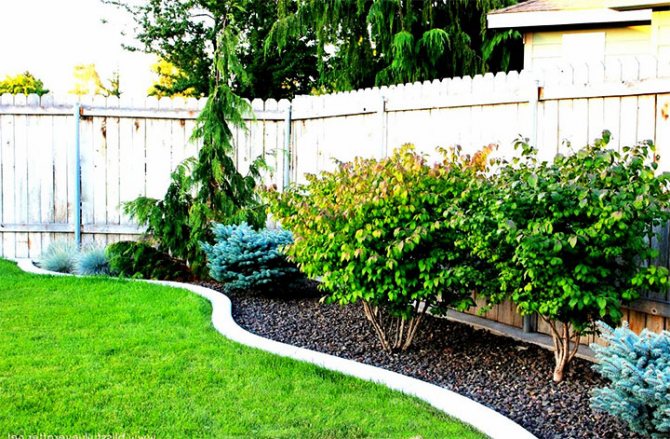

Read the article: "Building a fence from a wooden picket fence"
For a natural hedge, there are no restrictions on the choice of plantings. Against the background of the classic picket fence, boards, seedlings of fruit trees look good: apple trees, cherries, plums, pears.
Any shrubs (barberry, lilac, elderberry) will be an excellent addition to landscape design. You can experiment with wild grapes, hops.
Wrought iron
Decorative forging goes well with conifers. They can make the boundaries of the site visually wider. Fans of original solutions should try to compose a composition of various low-growing plants with exotic trees.
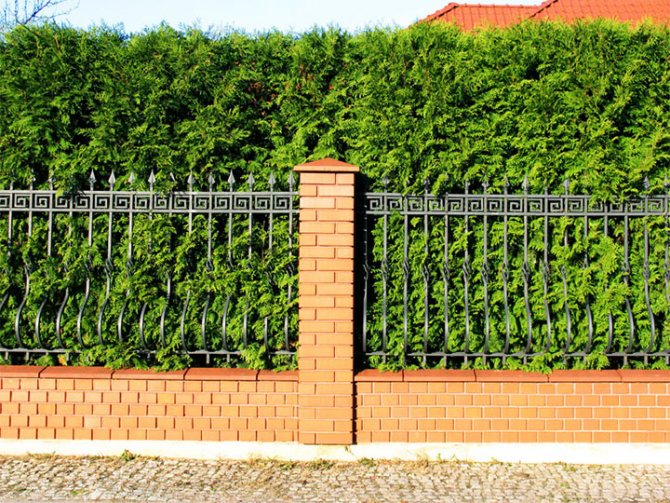

Photo: the bush hides the summer cottage from prying eyes
Mesh-netting
Such a fence is erected in the private sector on the border of two plots or as a budget fence for a summer residence. To reduce the number of curious glances at your estate, you need to build a green wall. Climbing plants go well with the net. Suitable:
- wild grapes;
- climbing roses;
- decorative beans;
- actinidia;
- hop.
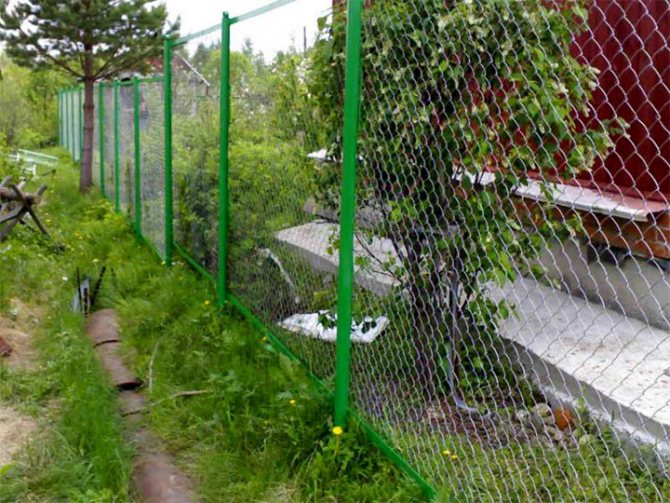

You should be especially careful with the latter, since it grows quickly, and it is difficult to remove it, so new shoots should be removed immediately.
It is recommended to plant plants at a distance of at least 1 m from each other.
If you want to use the soil near the fence with benefit, then we advise you to pay attention to the tall Jerusalem artichoke, which will be an excellent fruit shelter.
From corrugated board
This design has its own characteristics. The metal heats up a lot in the summer under the scorching sun, which is why the choice of seedlings is rather limited. You should take unpretentious types (rose hips, raspberries, vines).
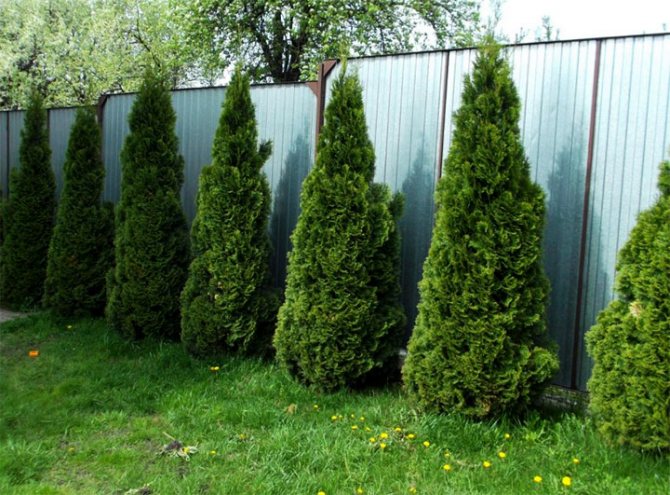

Photo: decoration of the perimeter of the site with conifers
Brick, concrete
Such a massive fence would require a good green disguise.
It can be:
- chestnut;
- fir;
- spruce;
- Linden;
- Rowan.
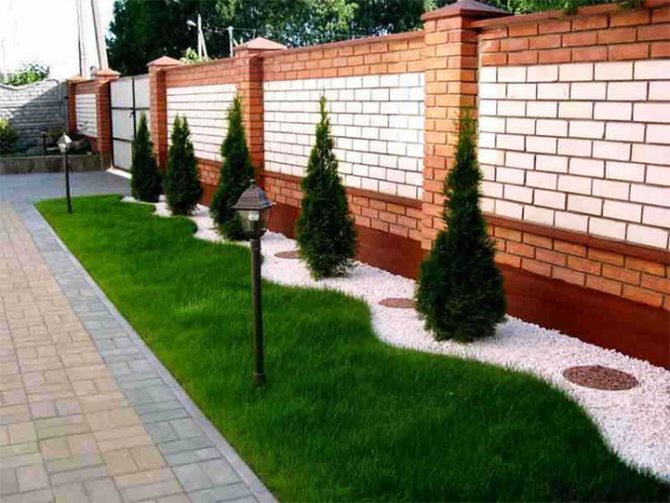

The distance from the trees to the foundation of the fence must be at least 3 m. A smaller distance will lead to the destruction of the concrete foundation.
When to plant trees and shrubs
It doesn't matter if you plant or transplant plants - it's better to do it in autumn. Experts also practice winter planting, but this is an overwhelming task for summer residents.
There is such a pattern: ornamental bushes, which bloom in the spring, plant in the fall; if they bloom in late summer, they can be planted in spring. As you can see, for most shrubs, planting dates are still autumn.
This season is also good because there is no need to rush, fearing that the buds are about to bloom. The main thing in autumn planting is that the seedlings can take root before severe frosts. Well, in the middle lane it is difficult to guess the cold season, so it is better to complete all planting work by mid-October.
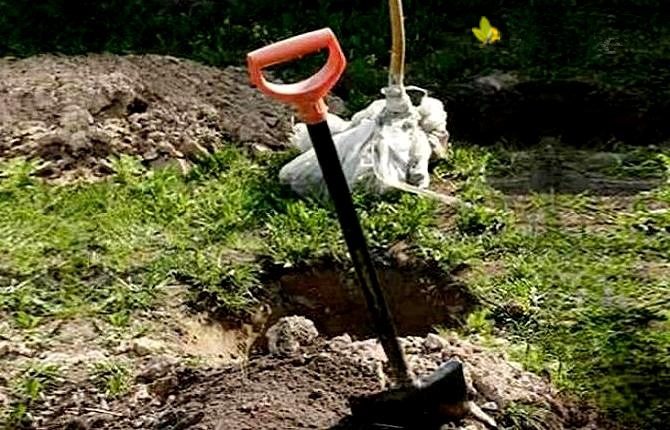

If, for some reason, trees or shrubs could not be planted by this time, you can take a chance and do it a little later. But at the same time, the roots must be protected from the cold. They do it this way: they mulch the trunk circle abundantly with peat, sawdust, leaves, etc.
If it is frosty outside, planting trees and shrubs is impossible. You need to give them an inclined position, dig in with earth and sprinkle with mulch. And plant in a permanent place with the onset of spring.
The situation is simpler with plants grown in containers. They can practically be planted at any time. The exception is evergreen bushes and trees or plants that are in bloom at this moment.
Fence from a profile or corrugated sheet
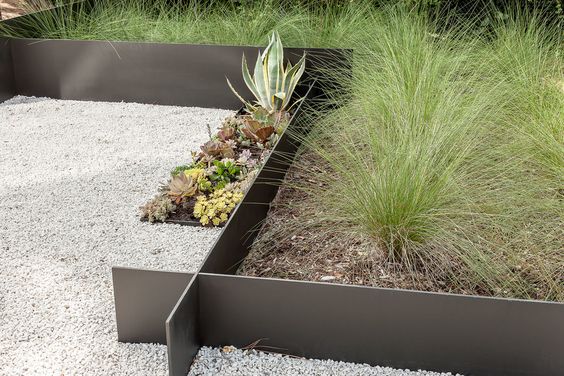

Strong plants should be planted along the corrugated or profiled sheet fence, since such a fence will be very hot by the sun, and the plants may suffer from overheating. It is recommended to paint such fences before planting plants. You can plant jasmine, lilac, raspberry and some varieties of lianas along such a fence.
You can plant trees from the side of the street - pine, spruce, chestnut, birch and cut them as they grow. Ate should be planted at a sufficient distance from the fence, control their growth by cutting. Great for planting from both the inside and outside of the fence, dahlias.
Planting along a solid fence
In this case, the main function of the landings is purely decorative. But sometimes it's also protective.
Barberry Thunberg (read about its cultivation and care here):


It grows by about a meter and a half. It attracts with the dense foliage, which acquires a reddish tint closer to autumn. If the bushes are placed close enough, then the trunks and twigs of the lower rows form an insurmountable barrier for small animals (the same hares, dogs, cats). For a dilapidated fence, with many "manholes", an excellent solution for planting.
viburnum vesicle (spirea):


It grows very quickly, forming dense thickets. Therefore, it requires regular crown formation.
Berry bushes
For planting along low fences - a good option. At the same time, the decoration of the cottage, and delicious fruits. For example, currants, gooseberries.


Along the fences, rowan, lilac, elderberry, thorn, thuja, chokeberry look good - it's impossible to list everything. If you carefully look at the thematic sites, then the choice of plants is really huge.


Principles for creating a decorative atmosphere around a private house
Gardening your backyard has several important advantages. Plants clean the air well from dust and exhaust gases, saturating it with oxygen. In addition, landscaping looks much better than an empty fence.
Before you start planting plants, you need to consider several important nuances.
- Decide on their purpose. Trees and shrubs can hide a not-so-beautiful fence, or, conversely, give it an even more aesthetic appearance.
- How much space should the plantings occupy.A plot of a small area should not be overloaded with extensive greenery, otherwise it will seem even smaller.
- Determine where the side of the fence along which the plants will be planted is located: in the shade or in the sun. You need to know this in order to choose suitable bushes or trees, because each species grows under certain conditions.
- Soil and the depth of the groundwater table play a huge role. If the land does not match, the plantings will not be able to develop at full strength or completely wither, and constant moisture is not always appropriate for the root system of some plants.
- How much time will be allocated to the subsequent care of the plants. Decorative species need constant care: pruning, hilling, feeding, etc. If there is not enough time for this, then you need to give preference to less demanding types.
- Planting height. Tall trees along the fence will look appropriate with the same fence on a large summer cottage. If the hedge is medium to low, then it is better to plant small shrubs.
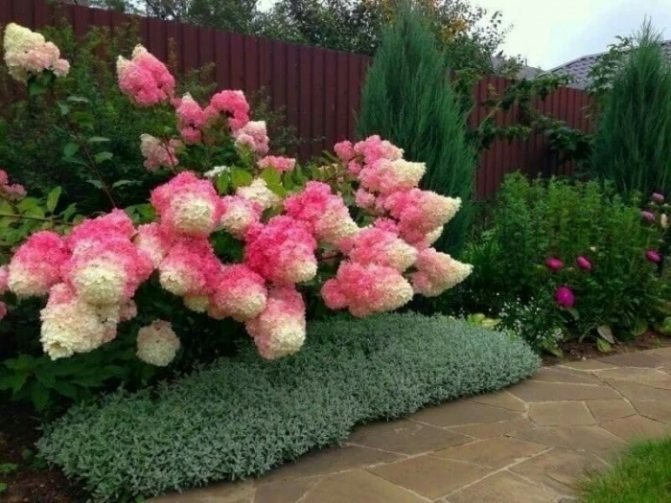

Multifaceted composition of plants of different shapes and sizes
Experts advise planning the placement of green spaces at the stage of building the fence. It is better to display this schematically in order to visually see how the finished section will look.
If space permits, shrubs can be planted in several rows to provide a solid wall along the fence.
If the site is along the road, then trees must be planted near the fence, the height of which exceeds the height of the fence itself. Thus, road dust protection is obtained.

